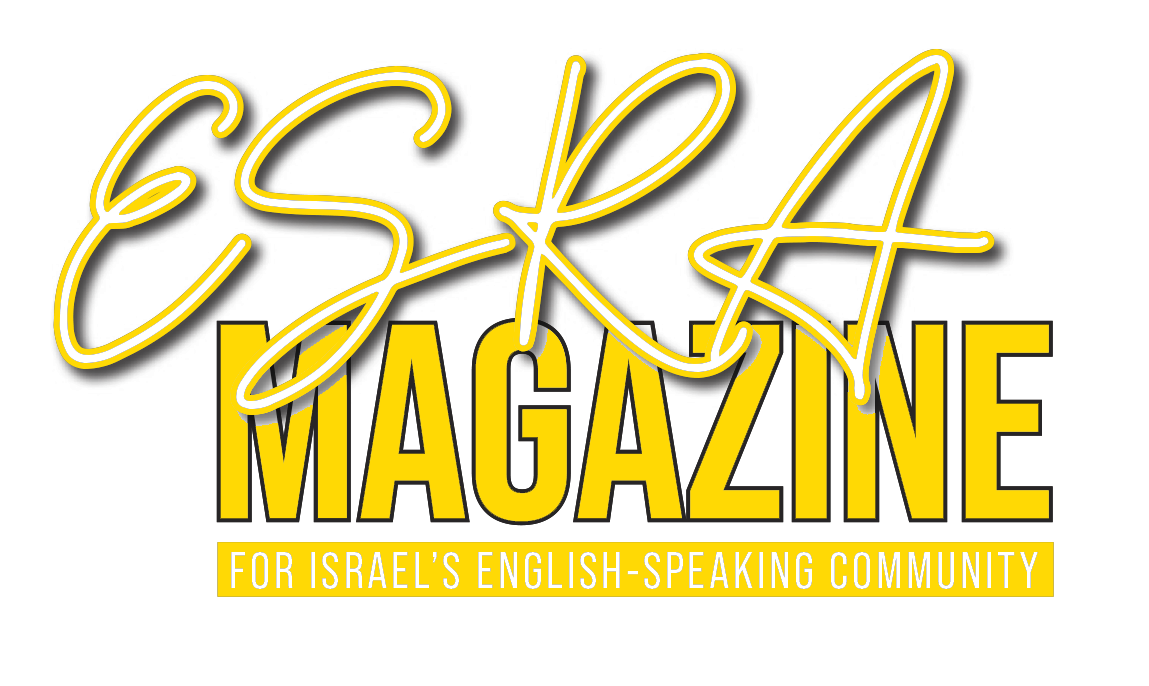Broza's Boots in Stepney & Whitechapel
Cemeteries, Shuls, Salt Beef & Survival
Text and Photographs: David Broza
Regular readers of ESRA Magazine may remember my previous Jewish East End rambles – and know I'm happiest when wandering with purpose, unearthing the layers of a city by walking its streets. On this urban hike, I set out once more to revisit the East End through the lens of Jewish history – a story written in stone, brick, sweat, song, and stubborn survival.
And for me this was more than a history walk. It was a personal pilgrimage. It's 44 years since I first walked through the gates of Queen Mary College, University of London, as a new student. To start this hike at my Department of Geography felt like a reunion with the past: me now, walking beside the ghosts of me then, and with them the countless others who made this patch of Jewish East London their world.
Cemeteries That Tell a Story
Hidden inside the grounds of Queen Mary University of London (as it's now known), behind lecture halls and laboratories, lies one of the most evocative places in Jewish London: the Nuevo Sephardi Cemetery. From the outside you'd never know it's there. Step through the gate and you enter a 300-year-old resting place of London's Sephardi Jews. Grand slabs lie cracked and worn, Hebrew inscriptions fade into lichen, yet the air hums with memory. Rabbis, traders, community leaders and children who fled Spain, Portugal and Holland rest here. To stand in the middle of a university campus surrounded by centuries of Jewish history is surreal. Students rush past with coffee cups while a forgotten city of the dead rests quietly among them.
The Sephardi story begins earlier, though, just down the road. The Velho Cemetery, founded in 1657, was the first Jewish burial ground in England after Cromwell readmitted the Jews. Hidden behind gates, it holds some of the first Sephardi families in London. To walk past it is to glimpse the rebirth of Jewish life in England.
Then onto the Alderney Road Cemetery, the oldest Ashkenazi cemetery in the UK, founded in 1696. From outside you see only a high brick wall, but within lie the generations who built Ashkenazi London – tailors, teachers, Chief Rabbis – families whose Yiddish voices once filled Whitechapel's streets.
A small miracle happened as I stood by that wall. The gate suddenly opened and the sexton appeared from his monthly check that all slept soundly. With no appointment and no photography allowed, we started to chat. This ancient cemetery is not open to the public without prior arrangement. The end of the story - he gave me 10 minutes (that ran to at least 30) to wander the graves and a blind eye that he didn't see me taking photos! What a charming gutte neshomeh, caring for the resting ground of so many honourable elders.
People and Places of Care
Not all the Jewish story is solemn. Nearby sits the Alice Model Nursery, established in 1901, named for a woman who devoted her life to improving childcare through the Jewish Day Nursery, the Sick Rooms Help Society and the Jewish Maternity Hospital. Here, children of immigrant Jewish families had a safe start – meals, health checks and education decades before such things were common. It still runs today, a beacon of continuity, though no longer serving Jewish families.
On the wall at QMC, a plaque honors Daniel Mendoza – "Mendoza the Jew," the prize fighter who rose from humble East End roots in the 18th century to become world boxing champion, revolutionising the sport with his intelligence and skill.
Close by is Albert Stern House, once a Jewish settlement house providing aid, advice and community spirit. Around the corner stood the Stepney Jewish Day Centre, until recently serving older Jewish Londoners with meals and companionship. Muswell Hill friends will remember pre–Pesach Sundays here, from my youth, packing and delivering Kosher lePesach groceries for elderly Jews – real Kosher Meals on Wheels. Just along the way, the London Independent Hospital occupies the site of the nurses' home for the London Jewish Hospital.
Streets with Brick Stories
From there I wandered into Stepney Green Dwellings, fine examples of Victorian philanthropic housing. Built by the Four Per Cent Industrial Dwellings Company, these red-brick blocks offered a step up from slum life – running water, sanitation, light and space. They still stand proud today. Nearby, Stepney Green Gardens gave me a pause – a patch of green where Jewish families once strolled, now lined with memorials like the Leonard Montefiore Fountain, honouring a young philanthropist who died at 27.
Down the street stands the Stepney Jewish School, founded in 1865, where Jewish children learned both secular and religious studies. Later expanded, it produced writers, actors and intellectuals – a powerhouse of working-class aspiration. Imagine the smell of ink and chalk, the chatter of Yiddish and English mingling. Famous pupils included playwright Bernard Kops and novelist Louis Golding.
I felt the same pride when photographing the painted signage of Raine's Boys School, where many Jewish boys studied who became famous names – Sidney Bloom of Bloom's, jazz musician Ronnie Scott, and actor Stephen Berkoff, to name but a few.
Whitechapel – Then and Now
Further west, I reached Whitechapel Road. Today it's a bustle of Bangladeshi stalls, halal butchers, sari shops and fruit vendors calling out their prices – a market of the here and now. But tilt your mind's eye and another market appears beneath it: the Jewish Whitechapel of a century ago, Yiddish voices haggling over herring, pickles, bagels and cloth.
At its heart stood the Royal London Hospital, serving the East End's Jewish population with Kosher food and Jewish wards. This was the hospital of Joseph Merrick, the "Elephant Man," and of Jewish doctors who pioneered care for the poor.
A little further south is Commercial Road, once 100% lined with Jewish bakers, printers and tailors and numerous other Jewish social and religious institutions. Among the gems that survive in memory, include the Synagogue of the Congregation of Jacob, a small but proud shul built in 1920–21, still open for services – and going through a revival!
And then East London Central Synagogue, on Nelson Street, the last purpose-built synagogue of the East End, opened in 1923. Its austere red-brick façade and blue gates hide a space that once pulsed with life before its congregation dwindled and graffiti crept across the walls.
Cable Street – Where History Roared
No East End walk is complete without Cable Street – once home to rope-making (hence the name) and later to resistance. On 4 October, 1936, fascist leader Oswald Mosley planned to march his Blackshirts through this Jewish heartland. But the people had other ideas. Jews, Irish dockers, communists and anarchists united, chanting "They shall not pass!" as barricades rose, paving stones flew and chamber pots rained from upstairs windows. It was a people's victory – a roar of unity against hate.
Today the Battle of Cable Street mural blazes across a giant wall, capturing that defiance in vivid colour. Horses rear, batons swing, men and women resist with fists and fury. Standing before it, I felt a lump in my throat – here ordinary people refused to be cowed.
Nearby, a plaque remembers Dr. Hannah Billig, the "Angel of Cable Street," a Jewish doctor who treated the poor through bomb raids and blackouts in WWII. Another marks the childhood home of Sir Jack Cohen, founder of Tesco.
Close by once stood the Poor Jews' Temporary Shelter, where penniless immigrants arriving from Eastern Europe could rest before finding their way. Imagine arriving with nothing but a bundle, and finding warmth, a bed and hope.
Settlements, Shuls, and Students
Moving further east, I passed the Bernhard Baron Settlement, now apartments but once home to schools, libraries and youth clubs. Funded by the Baron family in the 1920s, it offered 125 rooms for sport, recreation and prayer.
Then there is Fieldgate Street Great Synagogue – or what's left of it. My grandparents, Blumah and Shlomo Chaim Koor, were married here in August 1913. Founded in 1899 and rebuilt in 1913, it was once the grandest Ashkenazi synagogue of the East End – "Great" to distinguish it from smaller neighbours. The building still stands but closed in 2014. Beside it rises the East London Mosque, one of Europe's largest. The juxtaposition is striking – Jewish and Muslim histories side by side, sharing bricks and geography.
Right here stood Grodzinski's Bakery, founded in 1888. The wartime bomb that nearly destroyed the adjoining shul demolished the bakery too. Johnny Grodzinski told me he only recently removed the plaque, but the name still evokes the memory of challot, cakes and a heimishe taste of home.
Faces and Food
And then – the part that made my heart leap. At 150 Whitechapel Road was the first photographic studio of Boris Bennett, the legendary East End photographer. For decades, his glamorous portraits defined Jewish weddings and Bar Mitzvahs. He could photograph 60 couples on a Sunday, perfectly timed between chuppah and reception. My own parents posed under his lens, frozen in black-and-white elegance. To stand there, knowing his artistry preserved my family's joy, was powerful.
Finally, no East End Jewish hike would be complete without the memory of Bloom's Restaurant. Opened in 1920 by Sidney Bloom, it became the Jewish restaurant in London – legendary for salt beef sandwiches, brusque waiters and celebrity guests from Sinatra, to Streisand, to the Royal Family. Bloom's is long gone, replaced by a burger joint, but standing there, imagining the lost aroma of hot salt beef and mustard on rye, I felt both sadness and gratitude that such places existed.
My hike concluded next door at 88 Whitechapel High Street, once the offices of the Jewish Daily Post, with Arthur Szyk's huge Magen David logo still above the shop – a former hub of Yiddish journalism, politics and community life. To finish the hike there felt fitting – words were the heartbeat of this community, and words are how I carry it forward now.
This walk wasn't just a stroll. It was an immersion – in courage and hardship, in laughter and song, in names carved on gravestones and painted in murals. It's a walk of survival and renewal.
So next time you have a spare afternoon in London, follow in my bootsteps: from Mile End through Stepney, across Whitechapel, ending in Aldgate. Pause at each site. Let the stones speak, let the murals shout, let the ghosts walk beside you.
Because the Jewish East End isn't gone – you just have to walk it to feel it.







Comments